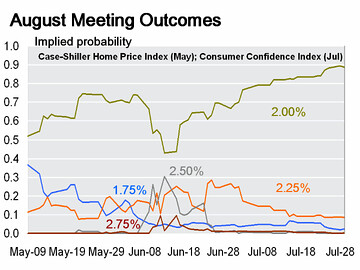Written by A Forex View From Afar on Wednesday, July 23, 2008
Back to www.thelfb-forex.com
08:00 Wake Up. Thank goodness for the 'mobile office'. Check that the web cam is switched off
09:00 Still in bed, reading WSJ/FT and criticizing the sub-prime mess
09:15 Check for any employees that may be late. They will get a penalty for that
09:35 Get the courage to come down from bed
10:30 Reach the office and the first coffee. 7/11, not Starbucks
11:00 Meet the parties that were scheduled at 09:00
11:15 Field the Treasury guy's calls saying that we are in deep trouble. The dollar is depreciating, because of smart-guys lending to clients with no income. The dollar has got dangerously low, and is affecting the asset/liabilities ratio
11:16 Call back the Treasury staff and tell them to relax, we take care of our own books. The accounting office will sort this out
11:25 Enjoy the in-house spa treatment
11:45 Field the accounting office calls saying that we are in bankruptcy. Oh no, No worries here. Tell him the treasury guys will sort it out. Note to self- Didn't he hear of the strong dollar gains lately that the treasury guys were looking for
12:05 Some newbie from the Fed calls me for some stress testing. Do we need that??? Stress is something that comes from too much coffee and our corporate policy restricts employees to a maximum of one coffee per day, 7/11, we are controlling expenses. So no stress here
12:06 Remember the old time when Ally was in charge. The only stress test back then was who sends the Fed Funds lower, us or the Fed
12:30 Lunch, followed closely by daily Midday sleep
15:15 The lending officers calls to approve some loans. Somebod with a minimal income wants a $3m house. Sure, no problem, approve them. They look like honest people, they'll pay it back, they did before
15:20 Call the Treasury to package the new $3m loan as AAA, and sell it. Instead of the risk that Mr 3m defaults we are going to buy some high quality bonds from Citi and UBS. We sell them brown paper, they give us quality paper back. Thank goodness that the rating agencies are behind the curve.
Note to self- Add the rating agencies to night-time prayers
15:21 The Treasury guys complain again about some ratios, but who cares about them? They said something about the dollar posting some gains? Or was it losses? Can't remember correctly, but who really cares
15:25 Switch to Bloomberg TV for the afternoon wrap. They said the dollar index lost 2 points today. Is that good or bad?
Note to self- Call the Treasury to confirm which way is good for the dollar
15:26 The same Bloomberg presenter said it was because of irresponsible lending and some bonds with a wrong ratings? This is good, right?
Note to self- Ensure that Mr 3m's docs do not contain my name
16:03 Find out that those bonds are ours.This is good, we are on TV with free positive publicity
16:10 Head home. Thinking the bonus this year. Our lending officers can't keep the pace with the requests, we buy quality paper from other banks and plus we get free publicity. The council will love me
16:12 Just found out our bank's share are down 15% this year. Good news indead.
Note to self- contact broker to buy more of our discounted shares.


 | Posted in »
| Posted in »